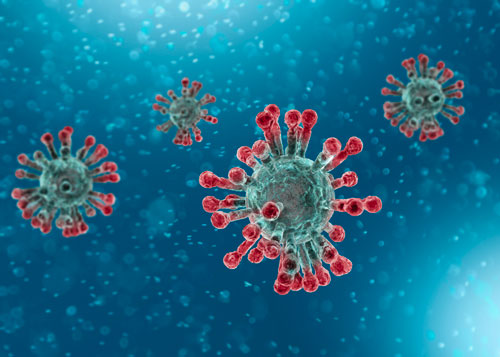We wipe down our door knobs. We disinfect other “high-touch” surfaces. We even worry about whether the mail is bringing coronavirus into our homes.
But it turns out that we may not need to agonize so much about whether surfaces are contaminated with the coronavirus.
As the pandemic goes on, researchers are learning more about how people get infected. And they have discovered that face-to-face transmission—not catching the virus from touching a contaminated surface—is responsible for most of the spread.
The virus does not spread easily from surfaces, according to the Centers for Disease Control and Prevention.[1]
The CDC says that “the virus that causes Covid-19 is spreading very easily and sustainably between people.”
It’s not impossible to become infected after you touch an object with coronavirus on it. But the CDC says that is “not thought to be the main way the virus spreads.”
Dr. Linsey Marr is an aerosol scientist at Virginia Tech. She said that there are “a lot more conditions that have to be met for transmission to happen via touching” compared to getting the virus through the air.[2]
She explained the chain of events that has to happen for you to get infected through touch. The coronavirus would have to:
- Be transferred to the object in large amounts.
- Survive on the object until you touch it.
- Survive on your hand until you touch your nose or eyes.
- Be transferred to your nose or eyes in amounts large enough to cause infection.
You’re far more likely to catch the coronavirus by inhaling the virus than for all four of these to happen.
Research published in The New England Journal of Medicine found that the coronavirus can survive for 24 hours on cardboard and three days on hard metal surfaces. But this is under ideal conditions. The virus often dies far sooner.[3]
Protect Yourself from Face-to-Face Coronavirus Spread
The fact that the CDC says it’s difficult to catch coronavirus from a surface should be good news. Perhaps it means we don’t have to obsess about disinfecting everything we touch. Nor do we have to wash our hands constantly.
But what it also means is that isolation is more important than ever. Since the virus is spread mainly from face-to-face contact, you are in little danger if you stay away from other people.
It also means that when you do go out in public, it’s crucial that you wear a mask. Consider wearing a face shield. These clear plastic visors are more comfortable than cloth face masks and are easier to communicate through. Many doctors wear them.
And you should stay six feet away from other people, farther if possible.
Dr. Catherine O’Neal is an infectious disease doctor at Our Lady of the Lake hospital in Baton Rouge. She emphasizes that the best way to avoid other people’s respiratory droplets from coughs, sneezing, and talking is to practice social distancing.
If someone “sneezes on my countertop, and I touch that countertop and bring it to my nose, I could still get the virus,” Dr. O’Neal said. “But that’s not the most efficient way” to spread it.[4]
Editor’s Note: Discover the single best supplement for stronger immunity… The fruit extract that helps 93% of people with respiratory viruses get better in just two days… The germ hotspot that most of us forget to sanitize. Find all this and more in Independent Healing’s Coronavirus Pandemic Guide. Go HERE.
Related Articles
Coronavirus: Cell Phones Cause ‘Rapid’ Spread, Researchers Find
Coronavirus: The More Comfortable Alternative to Masks
Pandemic Support: 5 Ways to Improve Lung Health
Like this Article? Forward this article here or Share on Facebook.
[1]https://www.cbsnews.com/news/cdc-coronavirus-doesnt-spread-easily-on-surfaces-transmission-before-symptoms/
[2]https://www.nytimes.com/2020/05/22/health/cdc-coronavirus-touching-surfaces.html
[3]https://www.nejm.org/doi/full/10.1056/NEJMc2004973
[4]https://www.wbrz.com/news/cdc-virus-does-not-spread-easily-on-surfaces/

